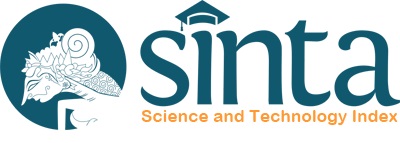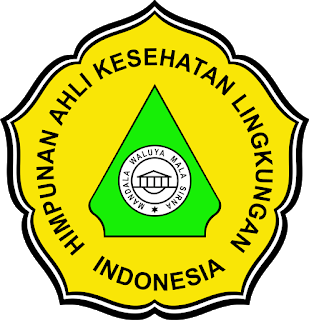Case Study on Well Water Quality in RW 05, Banta-bantaeng Village, Makassar City
DOI:
https://doi.org/10.32382/sulo.v25i2.1776Keywords:
Water quality, physical, chemical, and bacteriologicalAbstract
Water has become a primary necessity that is essential for humans to carry out their daily activities such as drinking, cooking, bathing, and even industrial processing, so that the function of water is not only limited to economic functions but also social functions. Water quality is determined by several factors, including physical factors such as temperature, turbidity, and dissolved solids. The purpose of this study is to determine the physical, chemical, and bacteriological quality of water in dug wells in Banta-Bantaeng Village, Rappocini District. This study is observational in nature with a descriptive approach. Based on the research, it was concluded that the physical, chemical, and bacteriological quality of dug well water in Banta-Bantaeng Village, Rappocini District, from each examination using 6 samples tested, the physical parameters did not meet the requirements, the chemical parameters met the requirements for each sample, and the bacteriological parameters showed 2 positive results containing MPN Coliform. Based on observations in the Banta-bantaeng Village area, several types of pollutants were found, namely toilets/septic tanks, sewers (domestic waste disposal), and pollution caused by the behavior of facility owners, who often wash and bathe around dug wells, causing the soil to become easily contaminated.
References
Agustian D. (2023). Metode Pengolahan Air Sederhana Untuk Menurunkan Kadar Fe (Besi) Pada Air Sumur. Jurnal Ilmiah STIKES Kendal.13,(3), 813-820. Diakses pada 10 Januari 2024
Fitriani, N., Rahmawati, D., & Nugroho, A. (2021). Hubungan jarak sumur dengan septic tank terhadap kualitas bakteriologis air tanah. Jurnal Kesehatan Lingkungan Indonesia, 20(3), 145–153.
Kementerian Kesehatan Republik Indonesia. (2023). Profil Kesehatan Indonesia 2023. Jakarta: Kemenkes RI.
Kementerian Lingkungan Hidup dan Kehutanan. (2022). Status Lingkungan Hidup Indonesia 2022. Jakarta: KLHK.
Pratama, R., Dewi, L., & Fadhilah, S. (2022). Analisis kualitas air sumur berdasarkan parameter fisik, kimia, dan mikrobiologi di Kota Padang. Jurnal Ilmu Kesehatan Masyarakat, 18(2), 201–210.
Rumaseuw, R. P., Yoku, A. M., & Manan, M. (2023). Hubungan konstruksi sumur gali dengan kualitas air di Kota Jayapura. Jurnal Gizi dan Kesehatan Lingkungan, 14(1), 55–64.
Sari, D. & Hidayat, R. (2023). Analisis kontaminasi E. coli pada sumber air tanah di lingkungan padat penduduk. Jurnal Kesehatan Global, 7(2), 88–96.
Korniasih N, Sumarya I (2021). Total Coliform Dan Escheria Coli Air Sumur Gali Di Kabupaten Gianyar. Jurnal Widya Biologi, 12 (02) 90-97. Diakses pada 10 Januari 2024
Kılıç, Z. (2020). The importance of water and conscious use of water. International Journal of Hydrology, 4(5), 239–241. (Online) https://doi.org/10.15406/ijh.2020.04.00250. Diakses pada 4 Januari 2024
Mangallo B, Alfontus R, Novitasari A, (2023). Efektivitas Metode Sand Filter Dalam Menurunkan Tingkat Kekeruhan Dan Kadar E. Coliform Pada Air Sumur. Jurnal Sains dan Teknologi Lingkungan, 1412-1328. Diakses pada 3 Januari 2024
Pratiwi I. (2020). Efektivitas Metode Gabungan Media Filter Cangkang Kerang (Anadara granosa). Jurnal Sul Pratiwi olipu. 20 (1), 48- 54. Diakses pada 5 Januari 2024
Rizki, A., & Suteja, M. S. (2023). Pengadaan Sumber Air Bersih Melalui Program Integrasi Hunian Dan Pengolahan Air Hujan Studi Kasus: Kampung Apung, Jakarta Barat. Jurnal Sains, Teknologi, Urban, Perancangan, Arsitektur (Stupa), 4(2), 1137– 1150.(Online).https://doi.org/10.24912/stupa.v4i2.21804. Diakses pada 10 januari 2024
Republik Indonesia. 2023. Peraturan Pemerintah Republik Indonesia Nomor 2 Tahun 2023. Tentang Standar Baku Mutu Kesehatan Lingkungan Dan Persyaratan Kesehatan Air Untuk Keperluan Hygiene Sanitasi, Air Minum,Kolam Renang, Permandian Umum. Diakses pada 6 Januari 2024
Syafarida U, Jati D, Analisis Hubungan Konstruksi Sumur Gali dan Sanitasi Lingkungan Terhadap Jumlah Bakteri Coliform Dalam Air Sumur Gali (Studi Kasus: Desa PAL IX, Kecamatan Sungai Kakap). Jurnal Ilmu Lingkungan, (2022), 437-444, 20(3). Diakses pada 3 Januari 2024
Tania Suhendar D, Sachoemar. (2020). Hubungan Kekeruhan Terhadap Materi Partikulat Tersuspensi (Mpt) Dan Kekeruhan Terhadap Klorofil Dalam Tambak Udang. Journal Of Fisheries and Marine Research. 4,(3), 332-338. Diakses pada 27 Desember 2023.
Walujodjati E (2022). Analisis Kebutuhan dan Ketersediaan Air. Jurnal Konstruksi, 20,(1), 183-193. Diakses pada 28 Desember 2023.
Yanti Kadare, & Margaret Rossana. (2022). Proyeksi Kebutuhan Air Bersih Jangka Pendek Dan Menengah Kecamatan Penajam Kabupaten Penajam Paser Utara. Jurnal Konstruksia, 13(2). Diakses pada 27 Desember 2023.
Downloads
Published
How to Cite
Issue
Section
PDF (Bahasa Indonesia) downloaded: 0


















